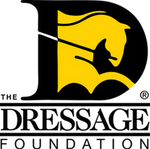2023 Young Rider Dream Program Journal: Ava Dingley (CA)
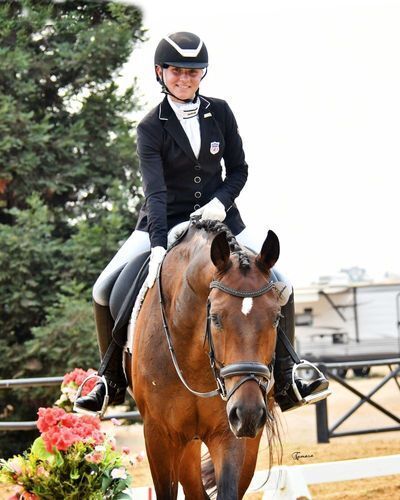
Photo by Tamara
I am so thankful and excited for this opportunity and owe a huge thanks to the donors and everyone who has made this possible. A program like this will help boost my career and I look forward to taking what I will learn in Wellington and applying it at home.
Ava's Day 1 Journal:
Day one for the Young Rider Dream Program was quite the start! We got to learn from incredible people including Adrienne Lyle and Kathy Connelly. Adrienne and her team of riders were phenomenal to learn from and observe. At TyL Farm, we watched Adrienne coach Quinn Iverson, Katie Duerrhammer, and Christian Simonson. With Kathy Connelly, we learned the basics of long-lining. There was so much that I learned today about training and horse care/horsemanship. Here are some compressed but key points that were taken from today.
From Adrienne:
- Large emphasis on the ability to control the horse’s strides in the movements and still being able to maintain the activity when shortening the strides
- Problems in the changes are usually not a problem with the change itself but an underlying problem that comes up in the changes
- A correction should not be made during the change, but after or even when starting over if a mistake is made
- When an issue arises in something as simple as the canter or even upper-level movements, it can be tackled by simplifying the issue into what is fundamentally wrong. For example: if a young horse were very unbalanced in the canter you may want to work on trot work for some time and then go back to the canter
- Fix things in an easier setting rather than going to the hardest thing and fixing it there
- They were beautifully patient and clear with the young horses, there was much emphasis and making sure to show the horse what the correct answer is so that they can be successful when giving them aids
- May be good to start on the easier side for young horses to make things more positive from the beginning
- A lot of praise even from a small reaction to encourage the horse in the right direction
- Worked in the walk pirouettes before going into the canter pirouettes
- Can be beneficial to do walk work to encourage the horse to push more into the bridle because the walk takes away some of the possible tension
- Even in the collection, you should still have more horse in front of you than behind you
- Allowing space to yield the horse in either direction while working on the trot and passage helps the horse feel that they have somewhere to go - otherwise, they may result in getting tense, breaking to canter, or becoming stiff in the poll
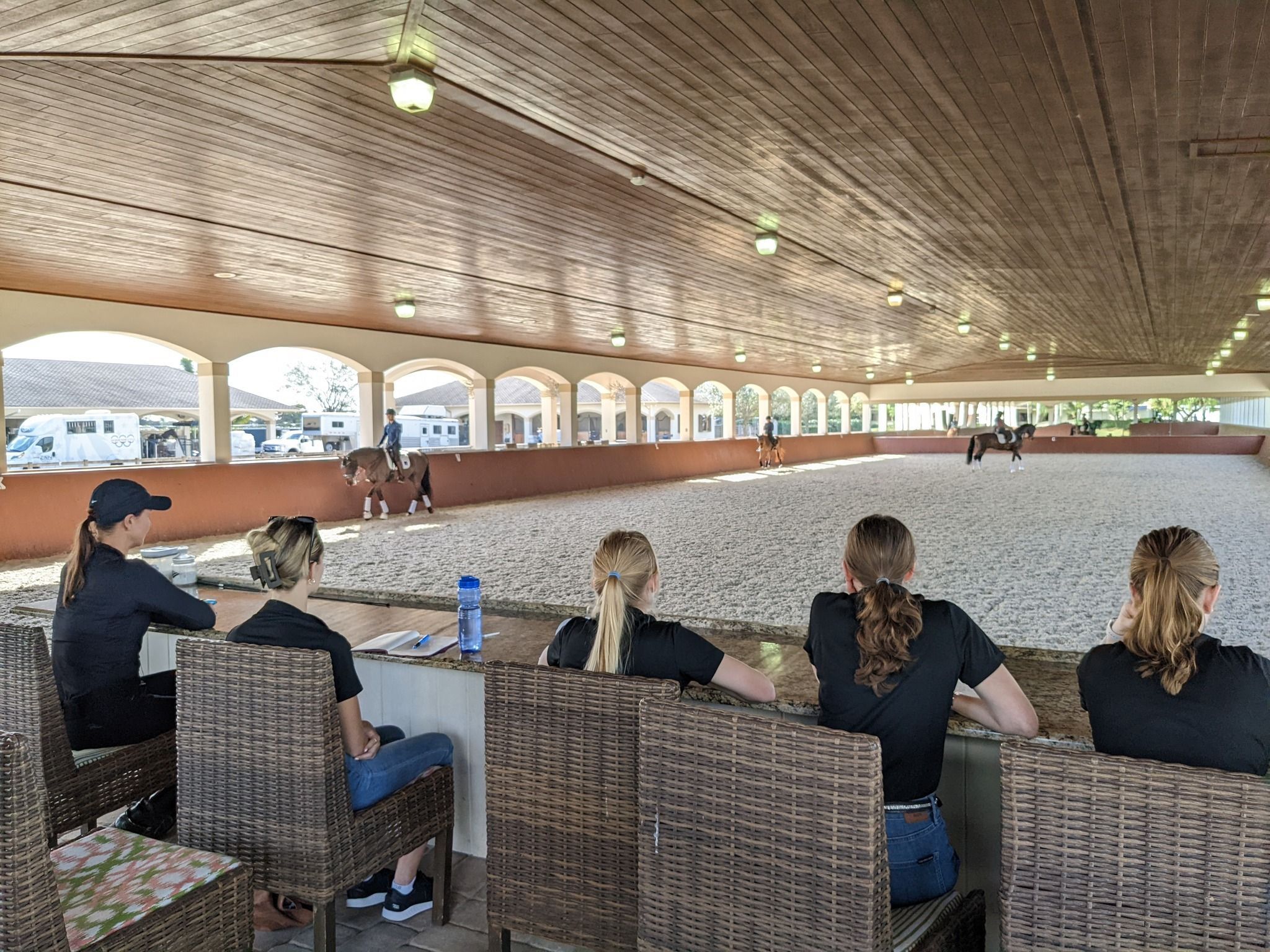
Sitting with Adrienne Lyle while she gives lessons
With Kathy:
- The main reason for long-lining is to train the “balance box” which is the essential ingredient that we need in order to be successful with our horses
- The balance box is where the vertical axis of the rider meets the horizontal axis of the horse
- Long-lining is a special gift, it creates a separate relationship with your horse that is not in the saddle and it is another way to build trust with your horse
- Allows you to observe what you want your horse to do in the saddle from the ground
- Horses don’t do things for two reasons: either they are physically unable to or they don’t understand what is being asked of them
- Horses are tactile perceptive animals which is why using light aids with the whip and the legs is the first thing we should go to rather than being strong to begin with
- Long-lining can help with the piaffe and collection work because it removes the struggle of riding the half halt
- Your body is still very important when long-lining
- You want to position yourself as if you are on the horse
- The specific way you move your wrists is essential
- Can be an excellent way to teach the piaffe
- The horse more understandingly associates a click with activating their leg
- The horse is able to understand what they are being asked of on the ground first which can make it much easier in the saddle
- It can help with tension as they may become nervous when training the piaffe so a great
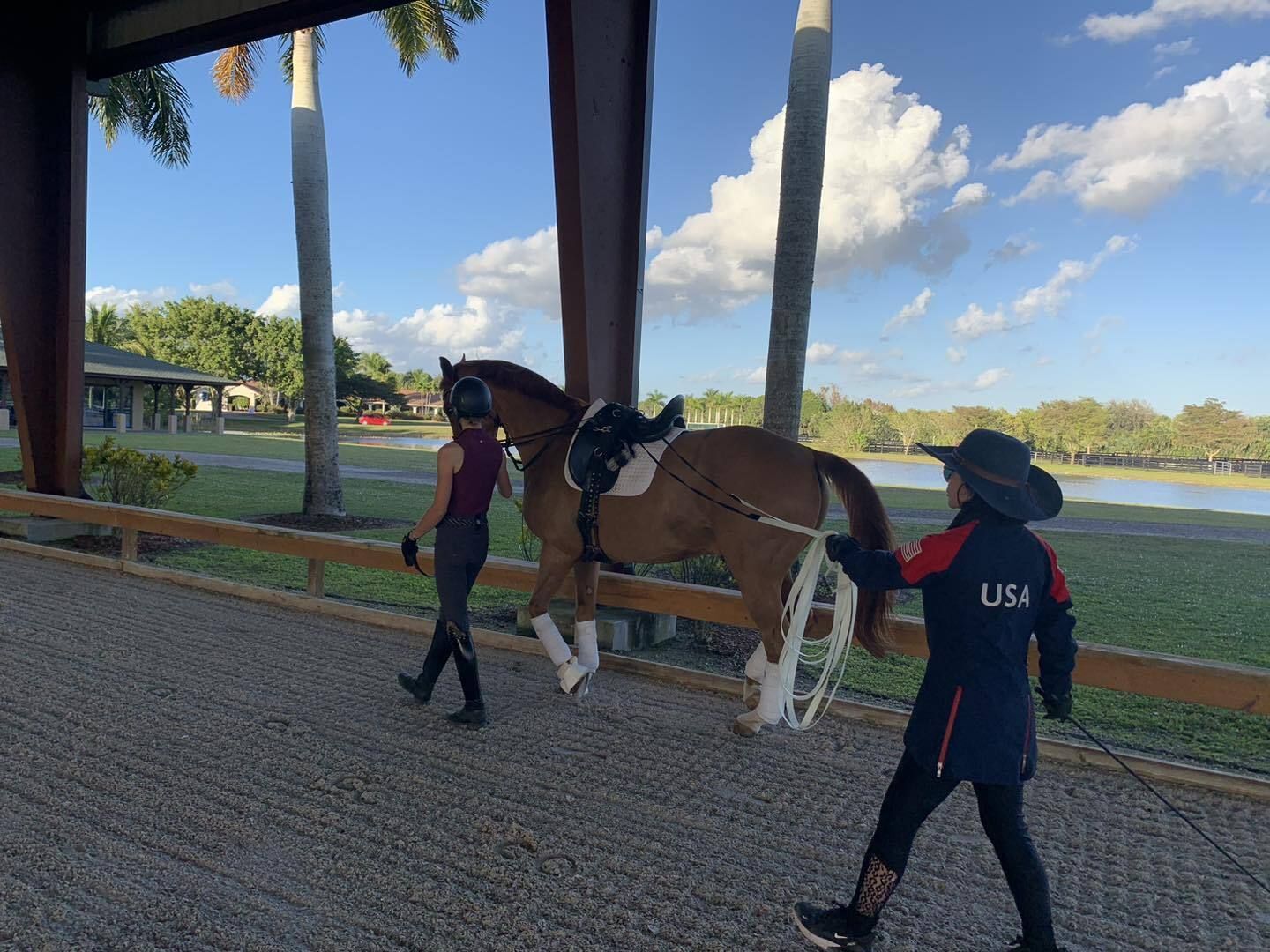
Long-lining demonstration by Kathy Connelly
Ava's Day 2 Journal:
Today was yet another tremendous day filled with lots of education and beautiful places. We got to watch JJ Tate ride three of her horses, we got a tour of Poinciana farm from Jane Cleveland, a tour of Helgstrand Dressage with Amanda Perkowski, and dinner with Katie Foster and Dr. Hilary Clayton. Everyone today was incredibly inspiring and wonderful to learn from. Below are some key ideas learned from each person today.
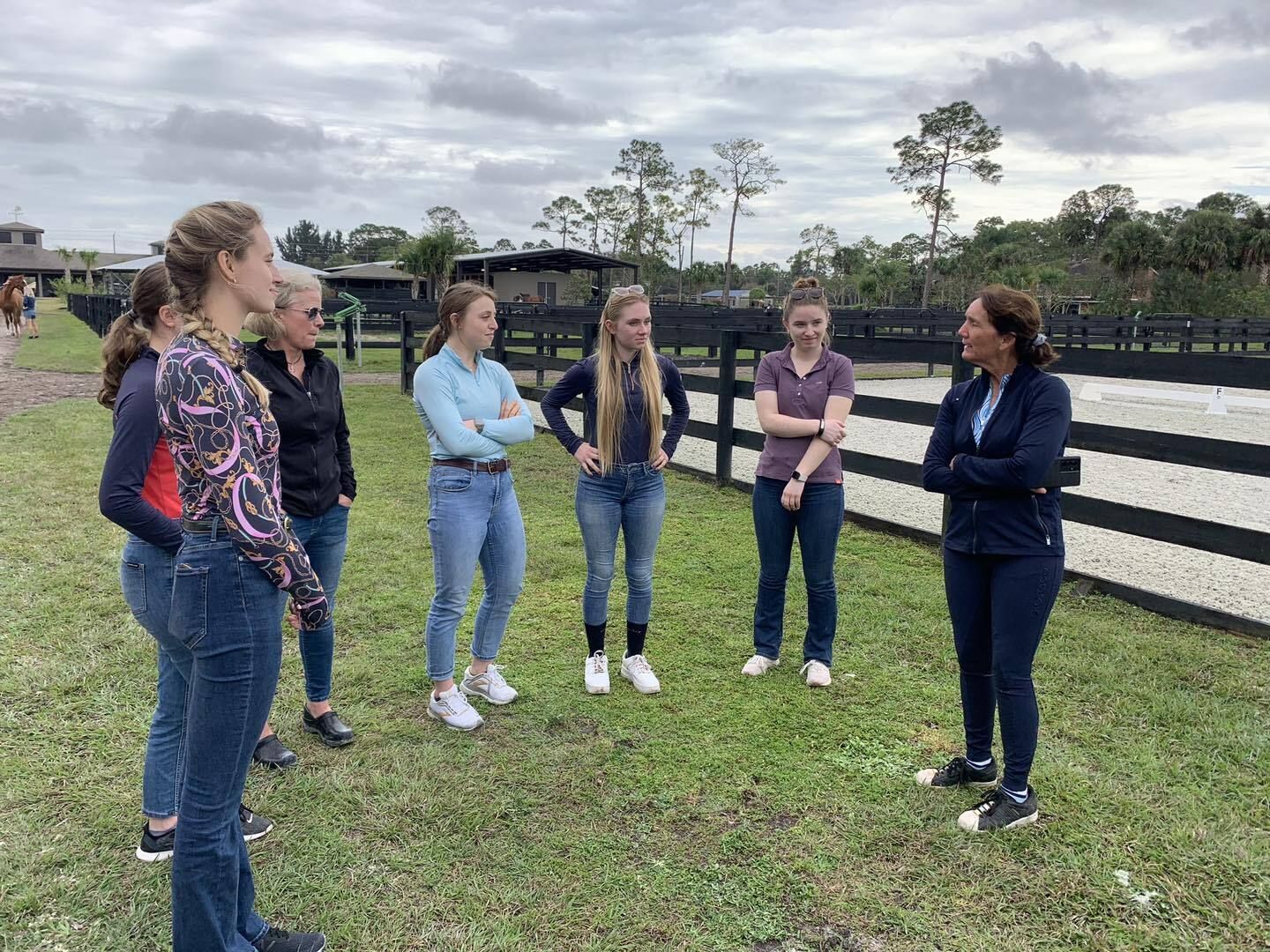
Tour of Poinciana Farm with owner, Jane Cleveland
With JJ Tate:
JJ rode three horses for us and throughout each ride she described some very important basic fundamentals and helpful training tools.
- You should always end each day knowing you did your best in everything you did.
- You can make an ok horse good, a good horse great, and a great horse fantastic.
- Once you understand and study the science of riding it doesn’t matter how much a horse costs, they’re still a horse and they’re all the same.
- Approach each horse as an individual while having a basic foundational system.
- 3 F’s:
- Free: The horse should feel free, unconstrained in the mouth, and not cluttered in their work
- Forward: The horse is not only going forward but has a forward state of mind. If the horse does not think forward, they shall go forward until they are thinking forward
- Flow: The horse is over the back and going to the bit. You can flow from one direction to the other, and from one gait to another
- It’s important that the horse’s back is round because they need to be round to carry the rider
- When thinking about a bridge, the arch is the rainbow, and the bit is the pot of gold
- If you train every day regularly and systematically you will have a strong, healthy horse
- We are building our horse’s vocabulary and eventually they will have a PhD in their own balance
- By creating a supple, strong horse through tuning the dials:
- Can you make their frame super long or super short?
- Can you make their stride as long as possible and as short as possible?
- Can you bend and can you be straight?
- Horses evade in three different ways: speed, crookedness, and inversion
- A supple horse creates a strong horse
- Find the least common denominator of why something is happening; where in the basics is a problem occurring?
- Shoulder-in improves the hocks, haunches-in improves the stifles, and half-pass and renverse improves the hips and back
- We need all three arches of the horse to be round so the horse can carry our weight without pain
- Don’t push out all of the power every day, conserve the horse’s energy
- The horse should feel proud and capable at the end of their work
- Sometimes you may need to exaggerate things in training like the schooling trot
- Important that the horse is in spinal alignment; otherwise they cannot be through
- Four channels of straightness: both sides of hind legs to both sides of bit, and diagonally
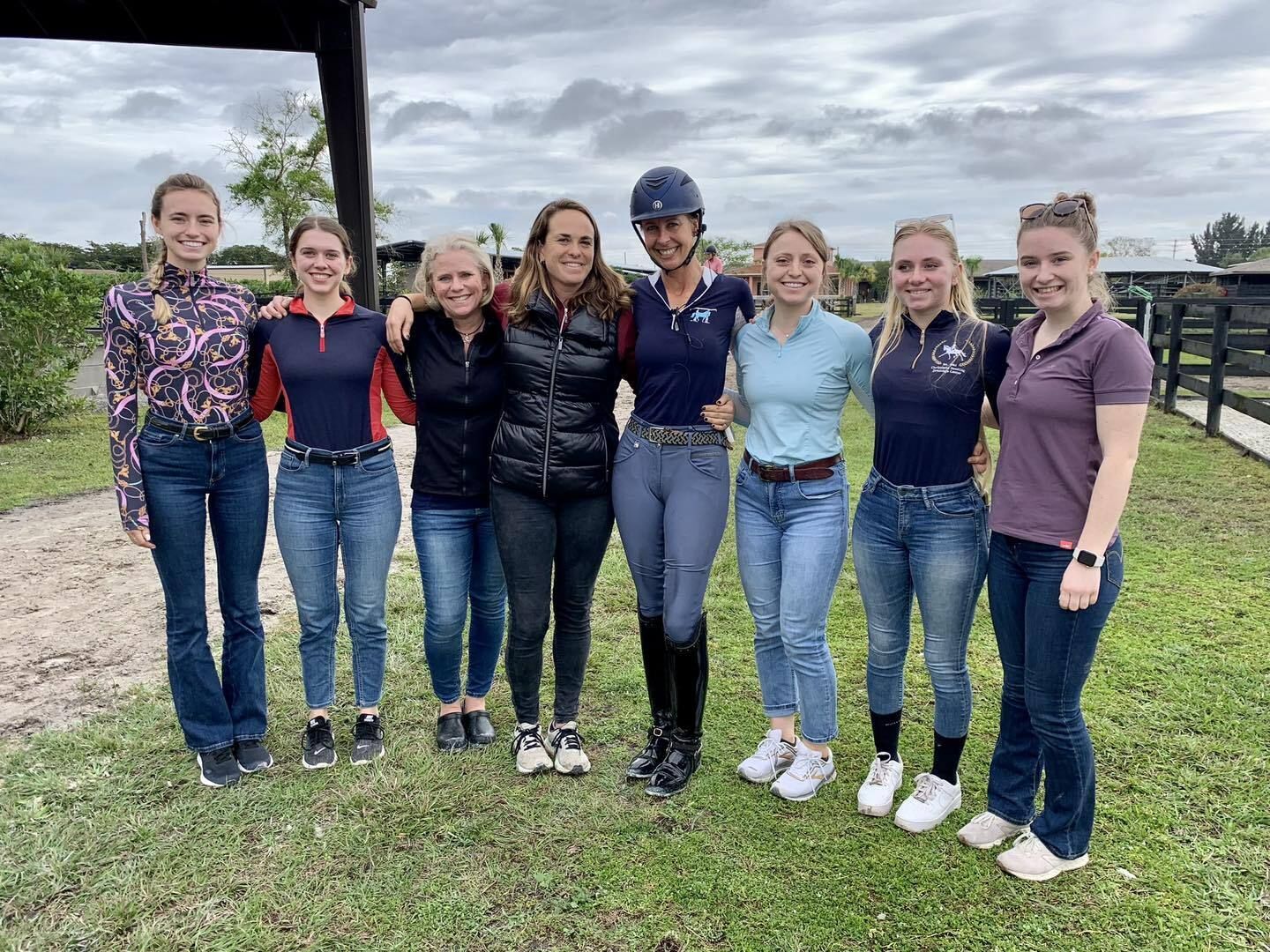
With JJ Tate
With Dr. Hilary Clayton:
Carrot stretches are very important to do every day. They help build the horse’s muscles and is based on a study of 12 weeks horse’s muscles strengthened significantly. Make sure to keep ears at same height when doing them.
Equiband is an excellent tool! It is not the pressure from the bands that make it effective. It is the light touch on the skin sends sensory signals to the spinal cords which sends a motor signal to the legs. They help stabilize the spine which prevents arthritis and improves horse’s awareness of body.
In the piaffe, the horse lightens the force going into the pastern of the front and hind legs. The hind legs bounce less than the front legs which is possibly because the horse controls how much force is absorbed by the ligaments using their muscles.
Bigger horses are harder to keep sound.
Look for a horse that lifts hind leg and then reaches underneath themselves.
Be prepared to go slowly even if the horse is talented; just because they can doesn’t mean they should.
Don’t hammer away at the tricks; remember that all of that is hard on the horse; the younger horse can take it more easily than the older horse.
Important to keep legs cool in work; tendons heat up to 45*C which is hot enough to kill cells. Polos and boots aren’t beneficial in terms of keeping the legs cool.
Ava's Day 3 Journal
Reese Koffler-Stanfield
- There are plenty of clients to go around. Having to let someone go is not a bad thing and makes room for someone who may be a better fit.
- Always take care and preserve yourself; that being said you should still always take every opportunity possible.
Ali Brock
- Being present, proving yourself, and being at the right place at the right time matters and can make a huge difference.
- Something I observed from all the riders we have seen thus far is that even though they all have different stories, they all have one specific thing in common. They have found and stuck by a trainer/mentor and worked their way up in their program. They were always around, always present, meeting as many people as possible, and taking as many opportunities as possible.
- Even if a certain position that you desire isn’t open right now, it may be in the future. Keep pushing through the door, keep asking what is available.
- Stick by your goals. It is absolutely possible to balance your personal life and career and having a family alongside a rigorous career is absolutely doable.
Charlotte Bredahl
- In terms of the developing programs, the horse and rider combinations shall maintain their progress in order to remain on the list.
- Listen to your horse, they will offer what they are ready to do. If they are uncomfortable, they will let you know, and if they are comfortable doing something you will know as well.
- You never know who is watching. Charlotte is often watching up-and-coming riders and the U25 classes to see how our next big riders are doing.
Ava's Day 4 Journal
Jennifer Williams
- Always check if you can shorten the strides in the warmup while maintaining energy and quickness; you should feel that the horse is still moving on their own.
- The energy still cycles forward at any degree of shortening the strides.
- In the canter, the horse should lower the croup and feel that they can sit and push forward to allow them to stretch.
- If you can shorten the strides without taking the hands backward you can get the compression you want without stopping the hind legs.
- Shorten the strides without shortening the neck.
- Test the horse in every corner.
- Don’t take away the energy when rocking back but sit, load, and keep the activity.
- Self-carriage also means self-propelled - they are forward by themself.
- This translates into the collection work as well. You should never feel that you are begging your horse to continue or to be forward.
- Keeping the hind legs busy through the half halts eventually leads to piaffe and passage work.
- You shall not get after your horse when asking for more from them but only if they stop doing what you are asking.
- Feel like you can access your horse’s back at any time.
- If your horse shuts down, make your expectations more simple. Horses don’t specifically want to do dressage, you have to ask for smaller steps in order to progress.
- It helps a lot to watch other riders that you look up to, especially before riding a test. Visualizing how your test will go by watching how it is supposed to be is highly beneficial.
- Already be thinking about your aids when walking your horse to the mounting block. The horse should walk with you and stop when you stop.
- Starting to think of shortening and lengthening strides is good even with young horses so that later on when you ask for more of that, it isn’t so foreign.
Ava's Wrap-Up
This trip was so incredible and eye-opening for me. Every person we got to meet had something special and unique to say but there were still some constant themes throughout everyone we spoke to as well which solidified some basic takeaways. In terms of riding, everyone put a lot of emphasis on maintaining activity in the hind legs, introducing shortening of strides already in young horses so they are more comfortable later on, and simplifying problems down to the core and fixing it from there. In terms of goals within our career, a big emphasis was put on taking every and any opportunity, not waiting for an opportunity but making them, and “pushing yourself through the door” by going out of your way to make things work. This trip truly set a fire under me and I left feeling like things are much more clear to me about how I can pave my way to reach my goals. I owe a huge thank you to TDF, Margaret Duprey, Beth Baumert, our chaperones Jen Verharen and Eliza Sydnor Romm, and all the riders who let us come learn from them this week. It has all truly been an unforgettable experience.
